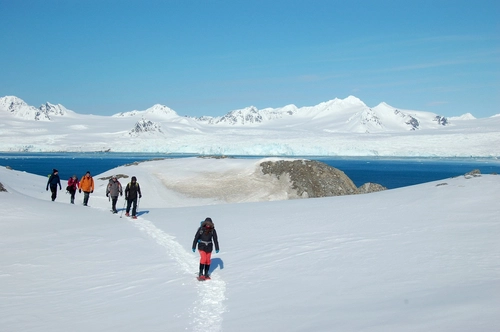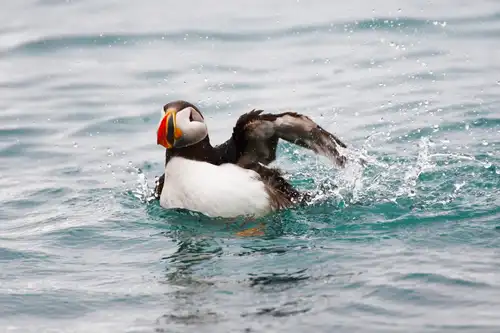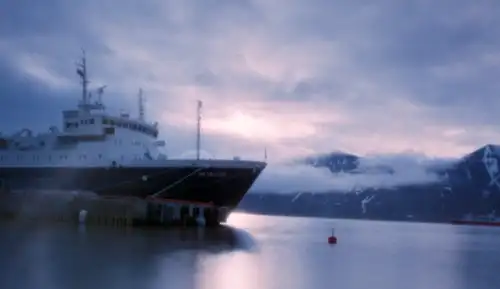Name: King Eider (Somateria spectabilis)
Length: 50 to 70 cm
Weight: 1.5 kg
Location: Asia, North America, Europe
Conservation status: Least Concern
Diet: Krill, squid, fish
Appearance: Males have a black body, white chest, blue head and neck, green cheek, and red bill with a yellow "crown." Females are brown with darker flank markings and a light black bill.
How do King Eiders feed?
During breeding season, King Eiders feed in fresh water, capturing small invertebrates from the surface. Throughout the rest of the year, they dive in the ocean to forage for invertebrates near the shallow sea floor, diving up to 50 meters deep.

Are King Eiders social?
King Eiders are highly social, forming flocks of up to 100,000 individuals.
How fast do King Eiders fly?
They can reach speeds over 70 km per hour.
What are King Eider birthing rituals like?
King Eiders migrate to their breeding grounds in June and July. They build nests lined with down and grass in scrapes on the Arctic tundra. Females lay 4 to 7 eggs and incubate them for 20 to 25 days. Chicks are raised in groups by the females and fledge at about 50 days old.
How long do King Eiders live?
They typically live 15 to 20 years in the wild.
How many King Eiders are there today?
The global population is estimated between 790,000 and 930,000 individuals.

Do King Eiders have any natural predators?
Their young and eggs are preyed upon by Arctic Foxes, Ravens, Gulls, and Skuas (Jeagers).
7 Edifying King Eider Facts
- King Eiders can cross-breed with Common Eiders.
- The genus name Somateria comes from Greek words "soma" meaning “body” and "erion" meaning “wool,” referring to their thick down.
- Despite their large range, they have no recognized subspecies.
- "Spectabilis" means “remarkable display” in Latin, highlighting the males' colorful plumage.
- Their weight varies seasonally, from 0.9 kg to 2.2 kg.
- King Eiders are among the largest sea ducks in the Northern Hemisphere.
- Females lose significant weight during incubation as they rarely feed.






Related Trips



Around Spitsbergen vs. North Spitsbergen

The Arctic Borderland of Kongsfjorden, Svalbard

Spitsbergen: Alkefjellet magic

A Bug’s Life in Svalbard

Eight Engaging Reindeer Facts

Polar bear feast

The Enchanting Islands of Svalbard

Birding Opportunities Abound in Spitsbergen

Svalbard vs. the Canadian Arctic

Puffins: Clown Birds of the Atlantic

15 Toothy Facts About the Atlantic Walrus

The Pack Ice and Polar Bears of North Spitsbergen

Tracking Greenland’s Wildlife from Space

Svalbard’s 12 Most Iconic Animals

Svalbard a Disneyland for geologists

Polar Bear Primer: Eight Facts About the Arctic Wanderer

Polar Bear Sets Impressive New Diving Record

Solargraphy & Pin Hole photography in the Arctic

The polar bear: king of the Arctic food chain






 8 Days / 7 Nights
8 Days / 7 Nights




